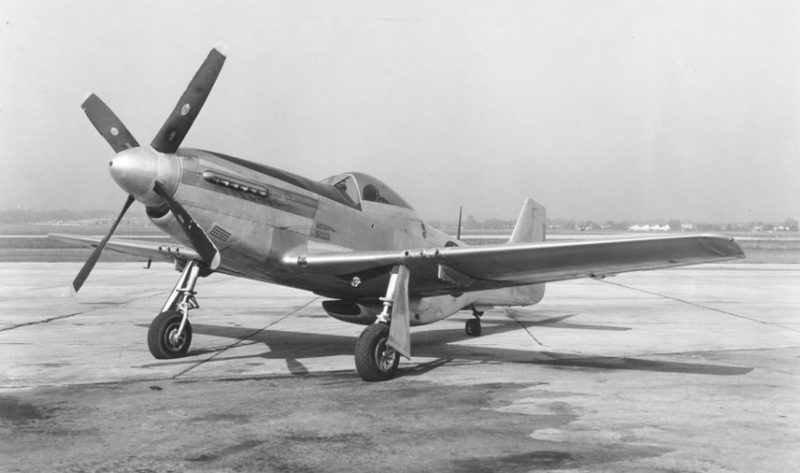The construction of the Northern Distributor Road at Norwich has thrown up a couple of archaeological finds from the First and the Second World Wars. The first to come to light was the remains of an American P-51D Mustang aircraft and the second was a Mk 1 Chemical mine which was the cause of some excitement.
The wreckage of the Mustang was found near the site of a new bypass. The identification of the particular aircraft was made by Anthony Haskins, project officer from Oxford Archaeology East, and Chris Collins, who runs the 467th Bomb Group Facebook page. The pilot was First Lieutenant Robert Young who was returning from a gunnery training exercise when he happened upon an air display, being given by the 56th Fighter Group, at the Rackheath Airfield in celebration of the 200th successful mission of the 467th bomb group.
Lt. Young had been flying B-24 bombers as a co-pilot but was transferred to RAF Wattisham, Suffolk, to fly Mustangs with the 479th fighter group. He was an inexperienced Mustang pilot, having only 37 flying hours in the plane. Lt. Young decided to add an impromptu low-level barrel roll to the air display but unfortunately this stunt did not work out as planned, and he crashed his plane at Gazebo Farm, west of the village of New Rackheath, near Norwich.
Lt. Young’s plane, nicknamed ‘Ellie May’, exploded on impact. Anthony Haskins explained, “Robert Young turned up, buzzed the airfield and control tower and attempted to carry out a barrel roll at low altitude, which didn’t come off. He basically inverted [the Mustang] and because he did not get enough airspeed, the plane stalled.’
This crash took place only a few days before peace was formally declared. Lt. Young is now buried in Madingley, Cambridge, at the American military cemetery.
The unearthing of a Mk 1 Chemical mine from WWI caused quite a stir. Specialists from 6 Alpha Associates had been contracted to clear the ground around the former RAF Horsham St Faith airfield of any unexploded ordnance. When one of their metal detectors started to ping, while clearing an area near Bullock Hill, the contractors investigated and were shocked to discover a chemical mine. Experts indicated that though this device was manufactured and filled with either mustard gas or phosphorous during WWI, it may well have been buried during WWII as an ‘area denial’ device.
The Police cordoned off an area of 200-yards, and the Royal Logistics Corps were called in to deal with the mine. The specialist contractors that found the device were checked by paramedics to make sure they weren’t suffering and ill effects caused by the device’s contents.
A spokesman for the Norfolk County Council said, ‘The item found was an empty Mk 1 Chemical mine, initially produced in 1914, but adapted for defensive purposes which is probably why it was in that location. It may have contained incendiary or illumination fill, but when found it had already been damaged, probably, by plowing, and any contents had long since dissipated.” This doesn’t mean that the mine wasn’t dangerous, though; it could still have contained a working explosive charge and residue from its contents may still have posed a threat.
The project manager from 6 Alpha, Robin Rickard explained that these types of mines were used at the height of WWII, when England faced the threat of a German invasion, to protect coastal airfields. He said, “It would have been initiated by a trip wire, which would have basically thrown mustard (gas) upwards and outwards, so anyone in the vicinity would have got a lung-full.” He explained that chemical weapons must be handled differently to other types of unexploded ordnance, as detonation could release the device’s contents and create a very dangerous situation.
An Army spokesman for the Royal Logistics Group from Colchester, Essex said that the device was “packaged, sealed and removed for safe disposal.”
